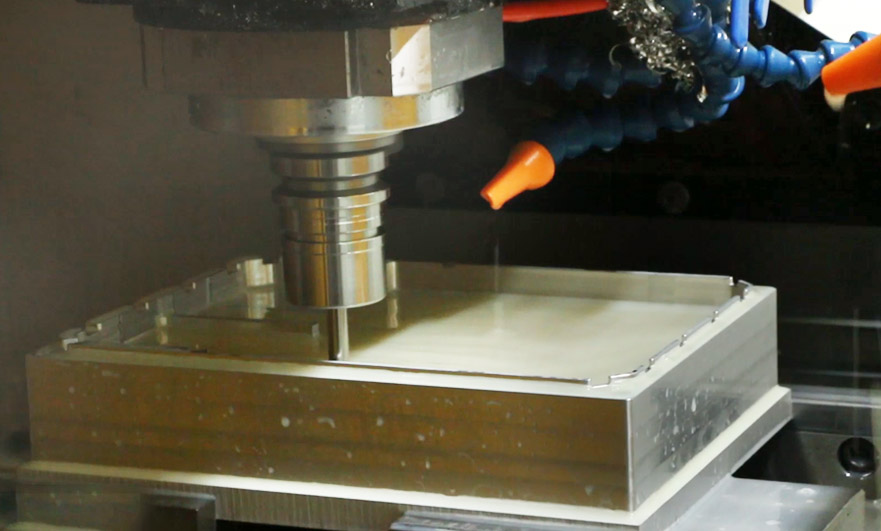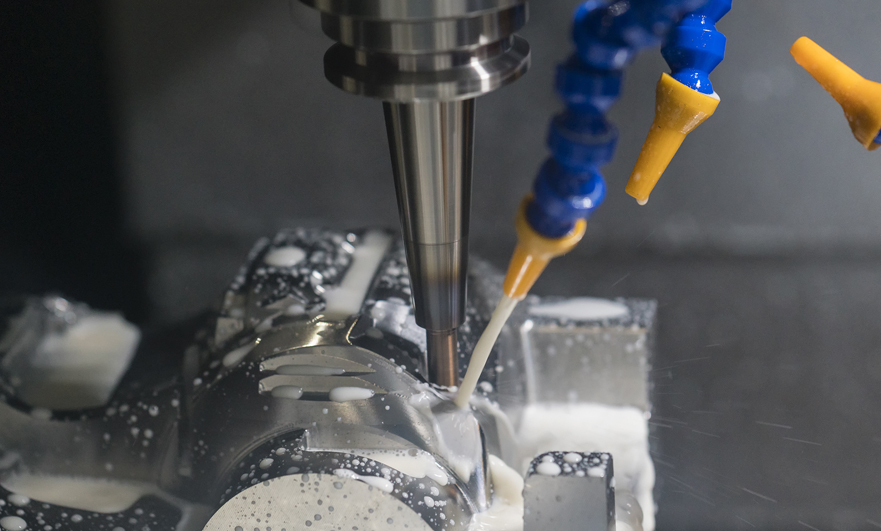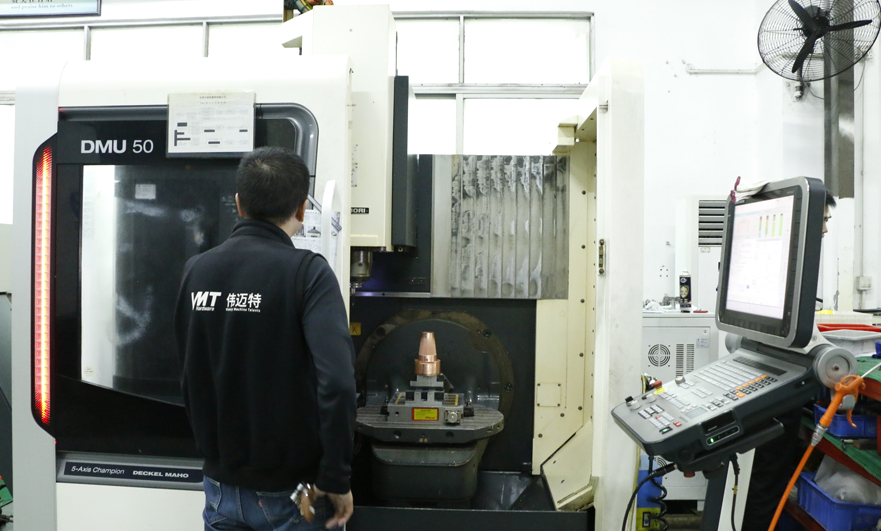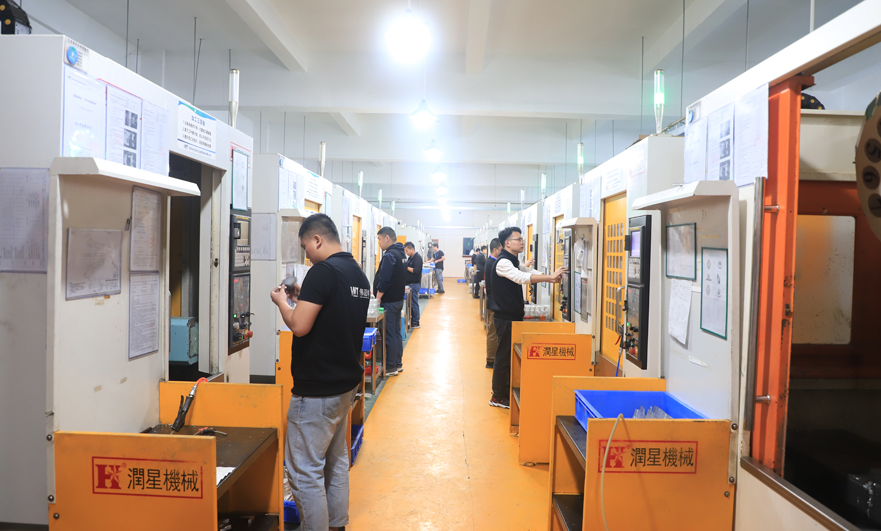15 years one-stop China custom CNC machining parts factory

Hey there I’m VMT Sam!
With 25 years of CNC machining experience we are committed to helping clients overcome 10000 complex part-processing challenges all to contribute to a better life through intelligent manufacturing. Contact us now
 201 |
Published by VMT at Jul 01 2022
201 |
Published by VMT at Jul 01 2022
CNC machining has grown into one of the most critical manufacturing processes used in workshops around the world. Adding computer control to a previously manual process enables a leap forward in the accuracy and precision of CNC machined parts.
In addition, due to the increasingly complex requirements of various industries, CNC machine tools have undergone several evolutions to better meet the needs of customers.
The development of CNC machining technology has spawned various forms and variations of this technology. These include 3-axis, 4-axis and 5-axis CNC machines.
As a leading provider of CNC machining services, we often receive questions from our customers about how these technologies work. So, we decided to learn more about them through this article.
This post will focus on how each technology works, advantages, disadvantages, and applications. Most importantly, we'll show you how to choose the best type of CNC machining for your project.
So, let's start with a 3-axis CNC machine.

3-axis CNC machining is the simplest and most common form. This process uses a rotating tool that moves along 3 axes to machine a stationary workpiece.
The cutting tool moves along the X, Y, and Z axes to trim excess material from the part. Additionally, it can even move along these multiple axes simultaneously to create the desired design.
This means that CNC machines can cut into the workpiece from side to side, front to back, up and down. However, the table holding the workpiece cannot move freely at all.
Benefit
Although more advanced systems are available in the industry today, 3-axis CNC machining is still widely used. So, let's take a look at some of the advantages of keeping it.
Low Cost
3-axis CNC machining is best for quick production of basic geometries and simple parts. Also, in 3-axis machining, it is relatively easy to program and set up the computer for a production run.
Versatility
3-axis CNC machining is a highly versatile part manufacturing process. Drilling, milling and even turning can be performed by simply changing the tool.
These machines also integrate automatic tool changers, extending their capabilities.
Shortcoming
3-axis machining is also hindered by a number of factors that make it unsuitable for all CNC machining needs. Some of these factors include:
Design Constraints
With 3-axis CNC machining, you are limited to basic shapes and geometries, for example, it cannot create undercut features. Although the machine can do more in the hands of a skilled machinist, it still can't match the complex shapes achievable with 4-axis and 5-axis CNC machining machines.
Additionally, it is not suitable for CNC machining parts with exceptionally deep features or narrow cavities.
Various Settings
Because the table holding the workpiece is stationary, the machinist has to change its orientation several times to CNC machine other faces.
This repositioning results in a loss of accuracy, not to mention the time wasted doing so.
Poor Surface Finish
The surface finish obtained with 3-axis CNC machining is relatively poor, especially on Z cuts. This happens because the tool is long. As a result, it experiences more vibration, which can damage the finish of CNC machined parts.
5-Axis CNC Machining
Application
3-axis CNC machining is still a very useful process. We can use it to create a variety of high-precision basic geometries.
These applications include:

4-axis CNC machining offers a significant upgrade over 3-axis machining. It adds additional degrees of freedom through rotational motion, making machining complex features possible and more straightforward.
In 4-axis CNC machining, the tool moves freely on the X, Y, and Z axes to CNC machine the part. However, the workpiece does not stand still on the table like in 3-axis machining.
A 4-axis CNC machine can rotate a workpiece around the X-axis in a plane called the A-axis. So as the tool moves along the workpiece and the table turns it, you can cut along the contour of the workpiece.
Benefit
Many advantages come from choosing a 4-axis CNC machine for your CNC machining projects. Here are some of them:
Enables Higher Design Complexity
Since the table rotates around the X-axis, 4-axis CNC machining machines can produce intricately detailed CNC machined parts. Additionally, the extra rotation makes it possible to access and CNC machine the CNC machined part on other faces at odd angles to create the final CNC machined part.
High Precision and Accuracy
The 4-axis CNC machining machine can access multiple faces of the workpiece without adjusting or changing fixtures. As a result, CNC machined parts made with it are very accurate and meet exacting standards.
Higher speed and lower production costs
Most work done on a 4-axis CNC machine requires only one set-up. As a result, work can proceed smoothly without downtime or intervention to change fixtures and tools.
Additionally, since multiple fixtures are not required to hold CNC machined parts, production costs are significantly reduced, especially compared to 3-axis CNC machining.
Shortcoming
4-axis CNC machines also have some drawbacks that may make them unsuitable for some customers. Let's take a look at them.
High Running Cost
The cost of running a 4-axis CNC machine is relatively high compared to running a 3-axis CNC machine. This is due to the extra features of the machine and the specialized labor required to operate the machine.
4-axis CNC machining
Application
4-axis CNC machining opens up a wide range of manufacturing possibilities. Some of its applications include:

5-axis CNC machining is the most accurate and advanced method of manufacturing complex, precision metal CNC machined parts on the shop floor.
In a 5-axis CNC machine, the tool moves in the X, Y, and Z axes, just like in a 3-axis CNC machine. In addition to this, the table can also rotate the workpiece around the X and Y axes.
These planes of rotation are called the A and B axes, respectively.
These extra rotations open up other faces of the workpiece that were previously impossible to CNC machine. Therefore, for a 5-axis CNC machining machine, accurate 3D machining is possible as the machine moves in the XYZ axes and rotates in the A and B planes at the same time.

Some people tout that 3+2 axis machining is the same as 5 axis machining, but that's not the case. Although both can move in the same direction, they move in different ways.
In a true 5-axis CNC machining milling machine, the tool can move on the XYZ axes while the table rotates on both the A and B axes. However, this simultaneous movement is not possible on a 3+2 axis milling machine.
3+2 axis machines can only move the table by rotating the table along the X and Y axes before cutting begins. It cannot do this in real-time when cutting on the XYZ axis.
Benefit
There are many advantages to using a quality 5-axis CNC machining service.
Complex CNC Machining Part Creation
Because of this, 5-axis CNC machining is very popular in the aerospace, automotive and energy industries.
It can handle a wide variety of curved geometries, narrow cavities, overhanging features, and more that other machining methods can’t even cover.
Shorten Delivery Time
Making parts with a 5-axis CNC machine is a very fast job. It does not require multiple setups to change fixture or CNC machined part orientation. It can create incredibly complex shapes in one single-step machining process.
Incredible Surface Finish
Thanks to 4- and 5-axis motion, this 5-axis CNC machining can orient the part closer to the cutting tool. This results in a cleaner, more accurate cut for a top-notch surface finish.
Shortcoming
The only downside to 5-axis CNC machining is its cost. The premium CNC machining services and features it offers make it more expensive than 3-axis and 4-axis CNC machining.
However, for applications that require ultra-high quality, the extra cost is worth it.
Application
Some typical applications for 5-axis CNC machining include:
Ready To Start Your Next Project?
Get Instant Quote

Request a Free Quote
Send us a message if you have any questions or request a quote. We will get back to you ASAP!